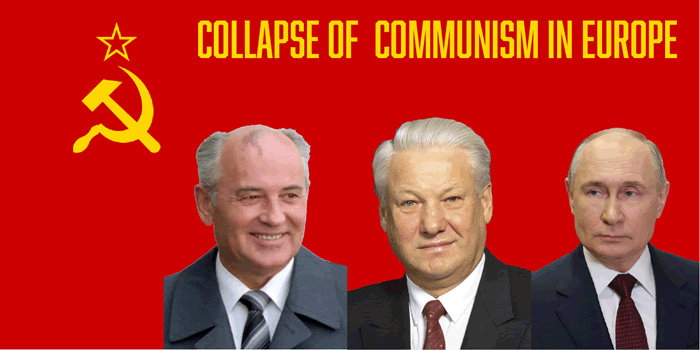Here's an overview of the collapse and its impact on the world.
Collapse of the Soviet Union:
- Economic Crisis: By the late 1980s, the Soviet economy was in dire straits. Central planning and a lack of market mechanisms had led to inefficiencies, shortages, and economic stagnation. The country was burdened by an unsustainable arms race with the United States and the cost of maintaining a vast empire.
- Political Reforms: Soviet leader Mikhail Gorbachev initiated a series of political reforms known as glasnost ("openness") and perestroika ("restructuring") in the mid-1980s. These reforms aimed to modernize the Soviet system, encourage political participation, and liberalize the economy.
- Weakening of Communist Control: As political reforms progressed, the control of the Communist Party over the political landscape began to erode. Dissident voices and nationalist movements in Soviet republics gained momentum.
- Challenges from Republics: The Soviet Union was a multi-ethnic federation, and many of its republics began asserting their independence or autonomy. In 1990-1991, several republics, including Lithuania, Latvia, and Estonia, declared independence.
- Failed Coup Attempt: In August 1991, a group of hardline Communist officials attempted to overthrow Gorbachev's government in a coup. The coup failed due to widespread popular resistance and the reluctance of key military figures to support it.
- Baltic States' Independence: Following the failed coup, the Baltic states (Lithuania, Latvia, and Estonia) quickly regained their independence, and other Soviet republics followed suit.
- Belavezha Accords: In December 1991, the leaders of Russia, Ukraine, and Belarus met in the Belavezha Forest and signed the Belavezha Accords, which effectively dissolved the Soviet Union and established the Commonwealth of Independent States (CIS).
- Gorbachev Resigns: On December 25, 1991, Mikhail Gorbachev resigned as president of the Soviet Union, and the red hammer-and-sickle flag was lowered from the Kremlin, symbolizing the end of the USSR.
|








